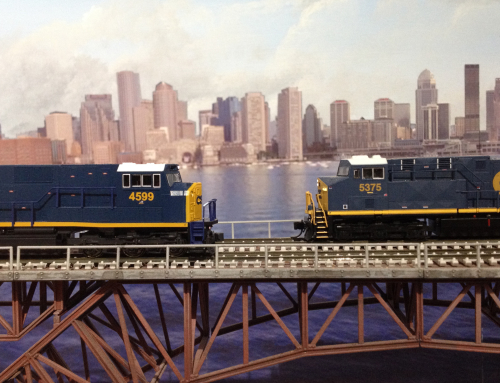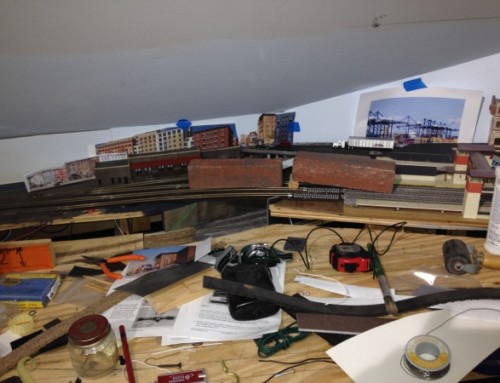For model railroaders, “move” is a four letter word.
I never thought I’d have to move my layout. But when the advantages of converting my separate artist’s studio – where the railroad resided in a loft – into a rental property became all too evident, I had to face up to it.
The thought of tearing out my model railroad was almost heartbreaking. Even more so than giving up my professional workspace for a more compact but equally adequate space in our empty nest of a large farmhouse.
I’d worked on that layout for about 20 years with progress just beginning to surge ahead upon retirement after years of sporadic attention. The layout was well thought out and coming together nicely as planned. Nothing much wrong with it and I want to continue along the same path rather than start completely over with a new concept.
The prospect of a new model railroad is daunting and exciting. The new space is a 15 x 15 foot bedroom with just a bit larger footprint than the old loft but considerably more volume without the slanted ceilings that encroached significantly upon the upper level of the old layout. I have the opportunity for some expansion of the layout and to correct design and operational problems and things I just plan didn’t like. Not the least of which will be easier access for visitors to the railroad room. I have space for wider curves and easier grades and a bit more train run between locations – all good.
With basically the same plan but modified to fit a square rather than rectangular space and to allow for doorway entry rather than via a stairway from below, I have determined that I can reuse large sections of turnout groups from the staging tracks and the yard throat and associated electronics. Even the computer program for automatic staging can be reused without modification if I keep the layout schematic the same.
Not just a little bit will not fit the same way and need to be rebuilt. Planing ahead would let me know what parts of the layout to scrap and what to try to save.
So I set about disassembling the old layout while simultaneously refining the new plans and preparing the railroad room. I approached salvage of the layout as a balancing act between time and money – if I had a bit more of the later I could have saved a lot of the former. I saved as much track as possible. Luckily I had glued it down with diluted white glue and a bit of water soaking allowed it to come up easily. Wiring – of which there was a lot – was scraped. As was most scenery – of which there was not much. My homemade photo backdrops could not be saved – but I have all the files on my computer so reconstructing them to fit the new configuration won’t be hard.
Of course all the model structures can be reused. Even the completed ones that never made it to installation on the old layout. It’s just as easy to design a track plan to accommodate finished buildings and bridges as it is to customize structures to fit the track plan.
I wonder how long it will take me to get the new layout to the point where the old layout was abandoned.
I am one of those fellows that gets satisfaction from doing all the work myself but I can see how that might work against getting a working railroad up in time to enjoy operating it with friends and fast growing grandchildren.




Leave A Comment